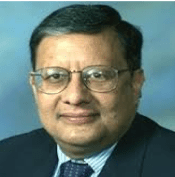Day 3 of the IUIS-IIS-FIMSA included many talks. In this article we shall focus on talks given by Prof. Abul Abbas, which focused on regulatory cells, role of T cells in autoimmunity and inflammation, as well as therapeutic strategies against autoimmune diseases.
His first lecture was a fascinating talk on the history of regulatory T cells. When first discovered Treg cells were identified as suppressor T cells and after the seminal findings shown by Dr Sakauchi, Tregs are now characterized as CD4+CD25+Foxp3+ T cells. The lineage defining transcription factor for Tregs was identified as Foxp3 and the CpG dinucleotide rich region in the Foxp3 locus called as Treg-specific demethylated region (TSDR)-regulate the epigenic regulation of Foxp3. Further he explained the role of IL-2 and IL-2 receptor in the generation of Treg cells and its suppressor function as the mutation in the IL-2 receptor α chain leads to SCID. The evolutionary history of Tregs dates back to the placental development in the organisms. The enhancer region of Foxp3 has coevolved with the placental development. The contribution and importance of IL-2 in T-reg development was explained in the later part of his lecture as Tregs cells do not produce IL-2 but are highly dependent on the IL-2 produced by other T cells.
His second lecture focused on autoimmunity and chronic inflammatory diseases. He explained that Crohn’s disease (inflammatory bowl disease) is due to a response against lumen commensals. He further showed that inflammation activation is an important player in the inflammatory response in the IBD, where a functional mutation in the NLRP3 inflammasome cause activation of the inflammatory pathway and production of IL-1 which is treated by using antagonists of IL-1. During his lecture he also outlined the role of bacteria in induction of Th17 cells in the gut, by outlining that e mice from sterile environment have poor levels of Th17 whereas other mice (exposed to bacteria) have significantly higher levels of Th17. This difference was eventually identified to be attributed to the presence of segmented filamentous bacteria in the gut of the mice. Finally, his last talk of the day focused on immunotherapy for autoimmune diseases, where he described two ways to control autoimmune diseases either by reducing the damage or curing the disease by attaining homeostasis. Broadly, the strategies he explained were:
- Suppressing the inflammation – Blocking the inflammatory cytokines such as TNF, IL1, IL6.
- Block the T cell cytokines that promote inflammation for eg anti IFNγ and Anti IL2 therapy.
- Targeting antibody producing cells using ANto CD20 mAb/BAFF antagonist/Anti CD40,CD40L mAb/ depletion of plasma cells/plasmapheresis etc.
He explained the consept of artificial immunoregulation in autoimmunity, e.g. CTLA4-Ig. In this construct, CTLA4 is fused with Fc portion of immunoglobulin which provides protection to CTLA4 from getting lysed in the lysosome thus enhancing the half life of CTLA4.
Article by Rushikesh Patil, Dimpu Gogoi and Mr. Naythan D’Cunha












